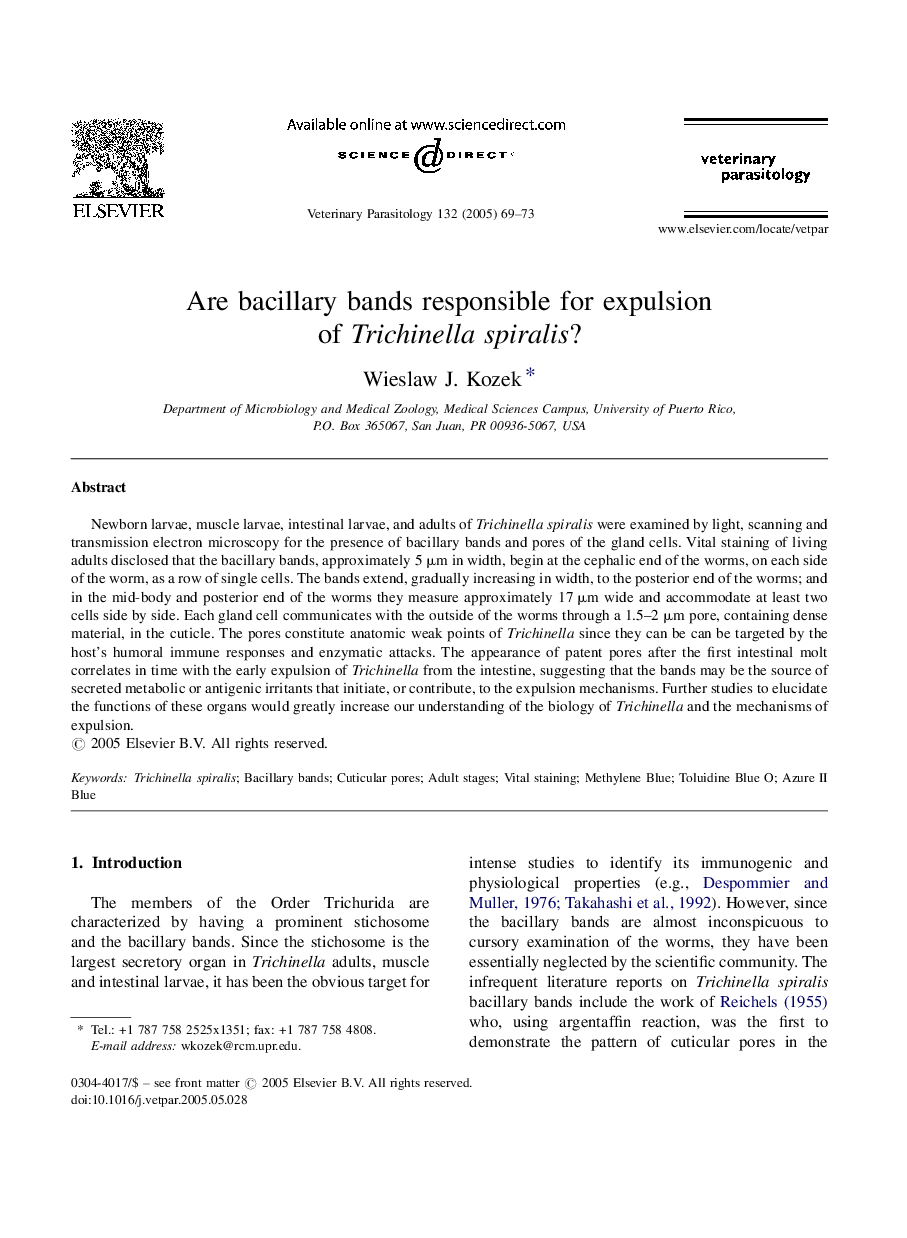| کد مقاله | کد نشریه | سال انتشار | مقاله انگلیسی | نسخه تمام متن |
|---|---|---|---|---|
| 8991019 | 1555805 | 2005 | 5 صفحه PDF | دانلود رایگان |
عنوان انگلیسی مقاله ISI
Are bacillary bands responsible for expulsion of Trichinella spiralis?
دانلود مقاله + سفارش ترجمه
دانلود مقاله ISI انگلیسی
رایگان برای ایرانیان
کلمات کلیدی
موضوعات مرتبط
علوم زیستی و بیوفناوری
علوم کشاورزی و بیولوژیک
علوم دامی و جانورشناسی
پیش نمایش صفحه اول مقاله

چکیده انگلیسی
Newborn larvae, muscle larvae, intestinal larvae, and adults of Trichinella spiralis were examined by light, scanning and transmission electron microscopy for the presence of bacillary bands and pores of the gland cells. Vital staining of living adults disclosed that the bacillary bands, approximately 5 μm in width, begin at the cephalic end of the worms, on each side of the worm, as a row of single cells. The bands extend, gradually increasing in width, to the posterior end of the worms; and in the mid-body and posterior end of the worms they measure approximately 17 μm wide and accommodate at least two cells side by side. Each gland cell communicates with the outside of the worms through a 1.5-2 μm pore, containing dense material, in the cuticle. The pores constitute anatomic weak points of Trichinella since they can be can be targeted by the host's humoral immune responses and enzymatic attacks. The appearance of patent pores after the first intestinal molt correlates in time with the early expulsion of Trichinella from the intestine, suggesting that the bands may be the source of secreted metabolic or antigenic irritants that initiate, or contribute, to the expulsion mechanisms. Further studies to elucidate the functions of these organs would greatly increase our understanding of the biology of Trichinella and the mechanisms of expulsion.
ناشر
Database: Elsevier - ScienceDirect (ساینس دایرکت)
Journal: Veterinary Parasitology - Volume 132, Issues 1â2, 5 September 2005, Pages 69-73
Journal: Veterinary Parasitology - Volume 132, Issues 1â2, 5 September 2005, Pages 69-73
نویسندگان
Wieslaw J. Kozek,